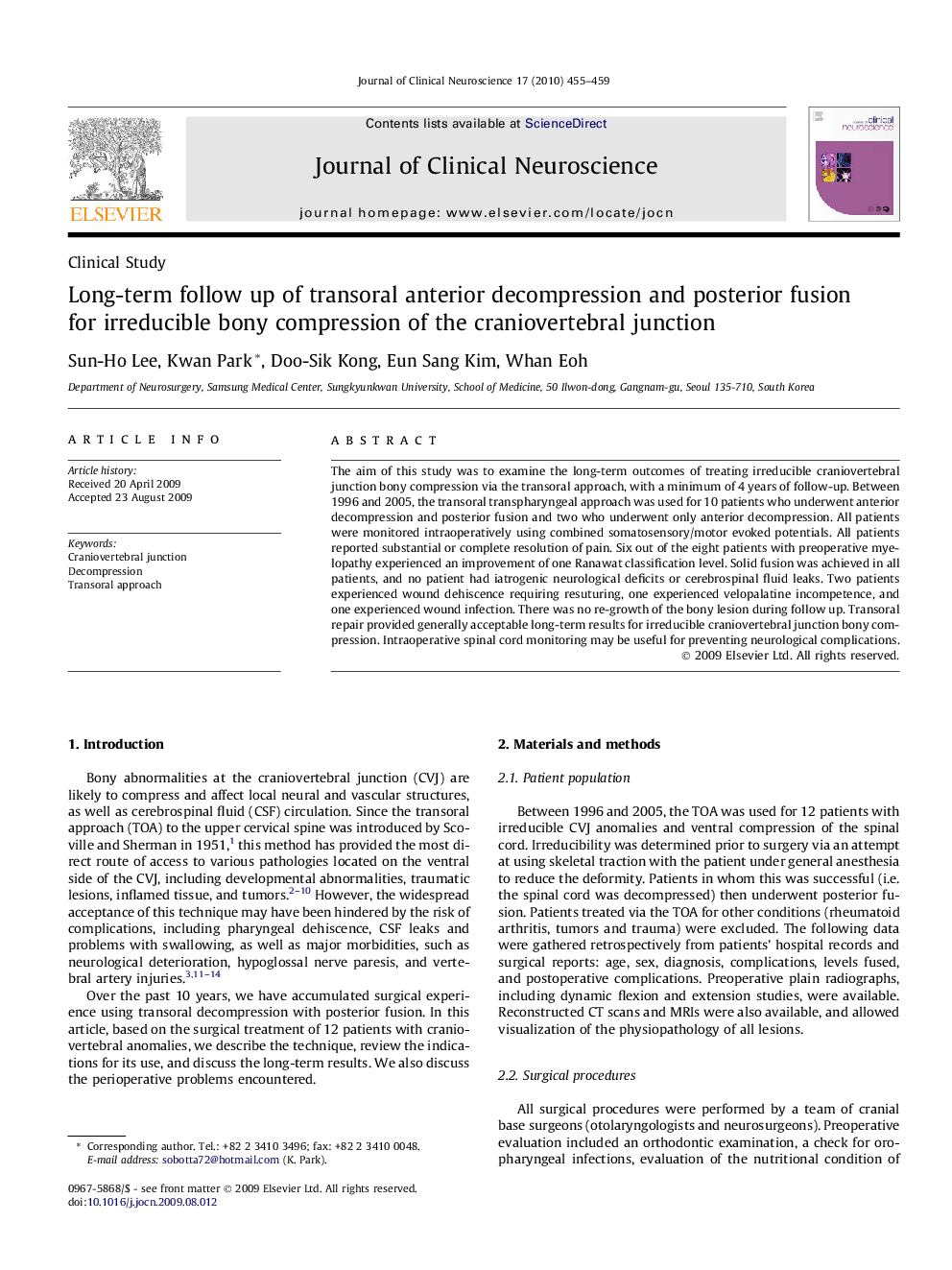| Article ID | Journal | Published Year | Pages | File Type |
|---|---|---|---|---|
| 3061575 | Journal of Clinical Neuroscience | 2010 | 5 Pages |
The aim of this study was to examine the long-term outcomes of treating irreducible craniovertebral junction bony compression via the transoral approach, with a minimum of 4 years of follow-up. Between 1996 and 2005, the transoral transpharyngeal approach was used for 10 patients who underwent anterior decompression and posterior fusion and two who underwent only anterior decompression. All patients were monitored intraoperatively using combined somatosensory/motor evoked potentials. All patients reported substantial or complete resolution of pain. Six out of the eight patients with preoperative myelopathy experienced an improvement of one Ranawat classification level. Solid fusion was achieved in all patients, and no patient had iatrogenic neurological deficits or cerebrospinal fluid leaks. Two patients experienced wound dehiscence requiring resuturing, one experienced velopalatine incompetence, and one experienced wound infection. There was no re-growth of the bony lesion during follow up. Transoral repair provided generally acceptable long-term results for irreducible craniovertebral junction bony compression. Intraoperative spinal cord monitoring may be useful for preventing neurological complications.
